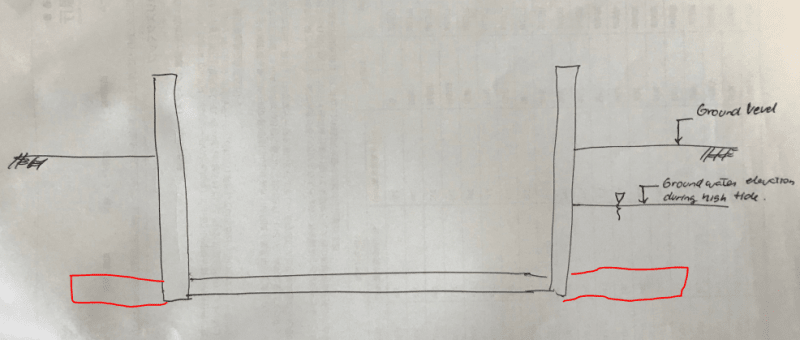Okiryu
Civil/Environmental
- Sep 13, 2013
- 1,094
Hi, we have a project to design a slab on grade close to the ocean. Groundwater levels at our site are related to the ocean tides. The ocean's highest water level (HWL) is about 0.3 m higher than the top of the slab. Due to project constraints, at this point, we cannot install subdrains with a sump pit and pump system. So, we have to design the slab to resist the buoyant forces. I am considering the buoyant weight of the concrete in the calculations. Considering only the weight of the slab to resist the buoyant forces, I get a very thick slab (about 0.75 m).
The equation that I am using is :
ɣwater*(H+0.30)=(ɣconcete - ɣwater)* H
where H is the thickness of the slab.
If this equation is correct, we cannot afford for a 0.75 m slab. Are there any other options to deal with this situation?
Thanks !
The equation that I am using is :
ɣwater*(H+0.30)=(ɣconcete - ɣwater)* H
where H is the thickness of the slab.
If this equation is correct, we cannot afford for a 0.75 m slab. Are there any other options to deal with this situation?
Thanks !

![[idea] [idea] [idea]](/data/assets/smilies/idea.gif)

